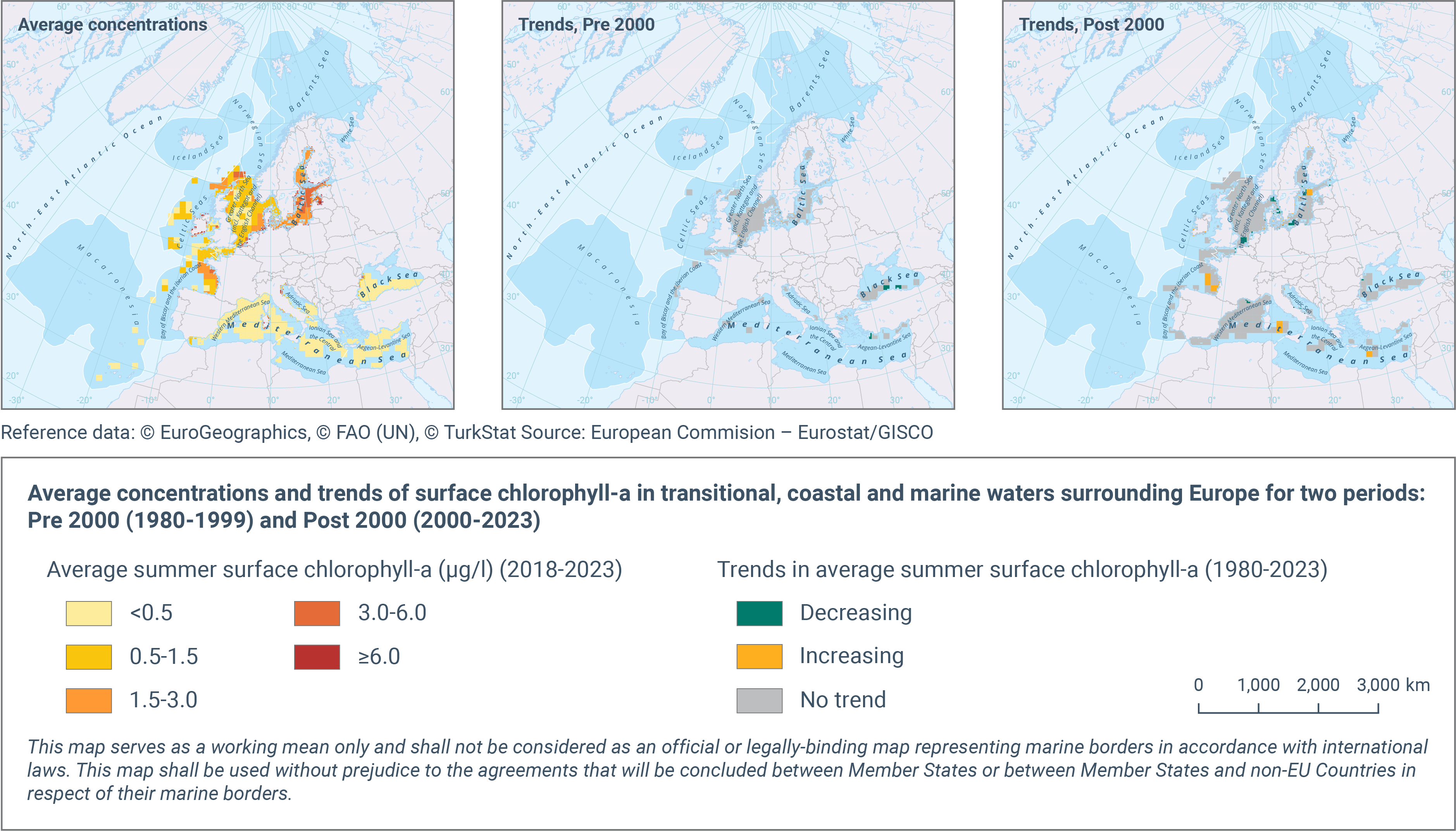All official European Union website addresses are in the europa.eu domain.
See all EU institutions and bodiesKey messages: Monitoring chlorophyll-a levels is key for assessing coastal and marine water quality. 95% of monitoring stations in Europe’s seas revealed no significant trend. Between 1980 and 2023, the number of locations with decreasing trends exceeded the number of locations with increasing trends in all sea regions. These findings highlight the ongoing risks of eutrophication for Europe’s seas.
Measurements of the mean concentrations of chlorophyll-a in the sea reflect natural differences between low, medium and high levels of biological productivity.
Although chlorophyll-a is not harmful, elevated levels can indicate excessive nutrient enrichment, either from anthropogenic or natural sources. Such excesses can lead to eutrophication, reducing biodiversity, degrading ecosystems, enabling harmful algae blooms and causing oxygen deficiency in bottom waters.
Given this, monitoring chlorophyll-a is key to tracking coastal and marine water quality. An analysis of the average summer chl-a concentrations across Europe's seas between 2018 and 2023 reveals areas with higher levels in the Baltic Sea and along coastal areas in the North Sea and Mediterranean Sea. (see Figure).
In the period after 2000, decreasing trends are mainly seen in areas with high average summer chl-a levels, around Denmark, the Kattegat and Northwest of Ireland, indicating improvements. Increasing trends are seen in the Baltic Sea, Bay of Biscay and several other coastal regions.
Please consult the relevant indicators and signals below for a more comprehensive overview on the topic.
Zero Pollution Action Plan 2030 target or policy objectives
- Reduce nutrient losses by 50% .
- Minimise human-caused eutrophication to achieve good environmental status ().
Return to the main pages:




